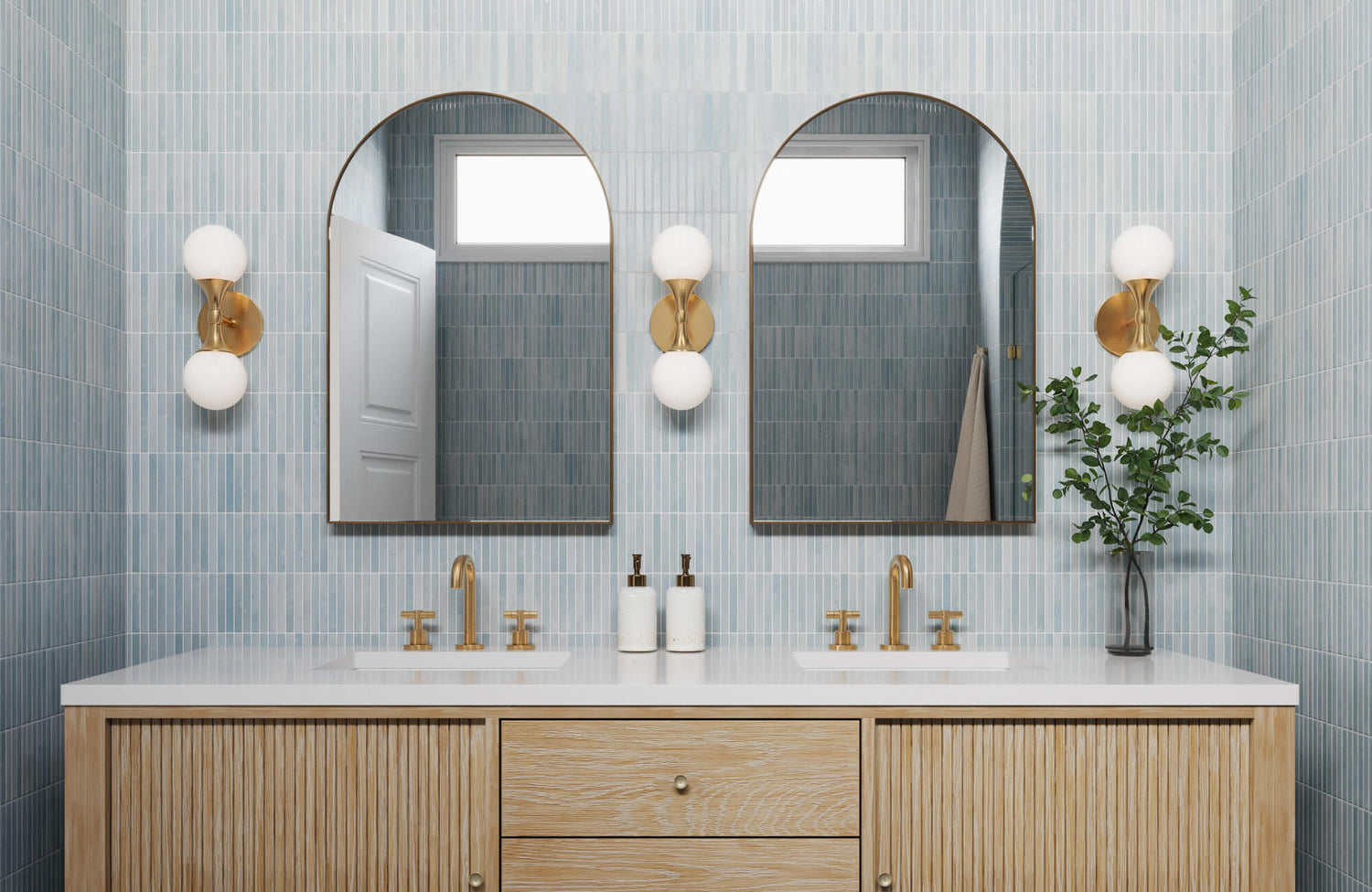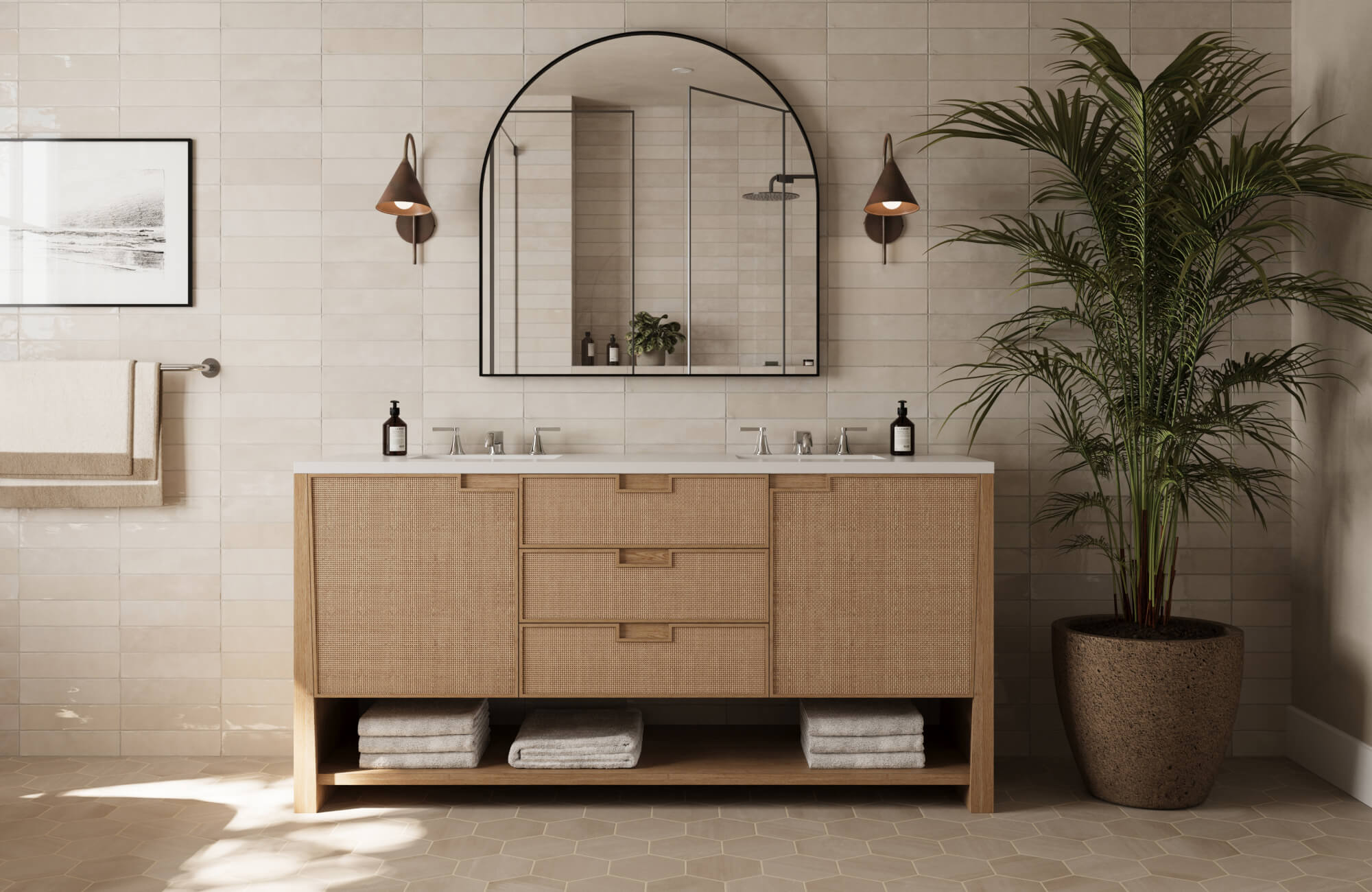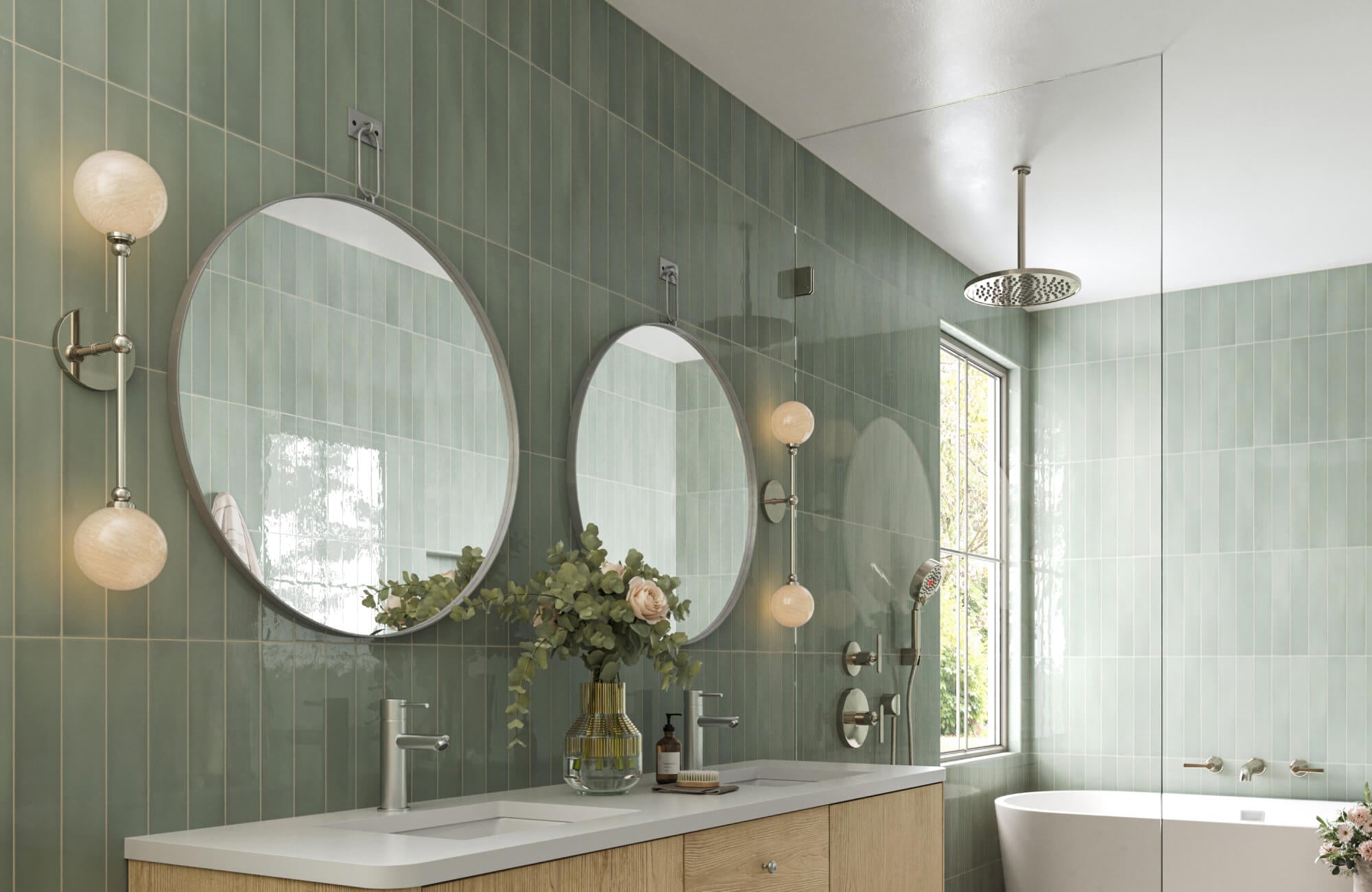Lighting can transform the way your home feels, but it’s also one of the most overlooked design elements. The right setup does more than just brighten a room; it supports how you live, enhances your decor, and shapes the atmosphere day to night. Yet many homes fall into the same pitfalls: relying too heavily on overhead lights, choosing mismatched fixtures, or forgetting how daylight plays a role.
In this article, we’ll walk through the most common home lighting mistakes and how to avoid them. From fixture placement and bulb temperature to layering techniques and control options, these tips will help you create a space that’s not only beautifully lit but thoughtfully designed to match the way you live.
Why Lighting Mistakes Can Hurt Your Space
Lighting isn’t just about visibility—it shapes how a room feels and functions. The right setup can make a home feel warm, balanced, and welcoming, while poor lighting choices can make even a beautifully decorated room feel awkward or uncomfortable. Overly bright overhead lights, shadowy corners, or glare from the wrong bulb can throw off the mood and make it hard to enjoy the space. Without thoughtful layering and placement, lighting can feel either too harsh or not nearly enough.
Practicality takes a hit, too, when the lighting doesn’t match how a space is used. For example, in the kitchen, weak task lighting can make cooking feel like a chore. In living rooms or bedrooms, relying only on a ceiling fixture often leaves you without the focused or cozy lighting needed for reading, relaxing, or hosting. When lighting doesn’t support your daily routine, the entire space feels less comfortable and less functional.
Lighting also plays a big part in how everything ties together visually. If fixtures feel out of place, or if the light itself clashes with your room’s colors or finishes, it can disrupt the flow of your design. Even something as simple as the wrong bulb temperature can throw off how your furnishings look. Treating lighting as part of the design, not an afterthought, makes all the difference.
Relying on Just One Overhead Fixture
A single ceiling light might seem like the simplest solution, but it often leaves a room feeling uneven or stark. Without additional sources of light, shadows creep in, details get lost, and the atmosphere can feel flat or overly sterile. Below, we’ll break down how layered lighting creates depth, balance, and flexibility; and when a lone fixture might actually be enough.
What Is Layered Lighting and Why Does It Matter?
Layered lighting refers to using multiple types of light sources in a room to create a more balanced and inviting environment. It includes ambient lighting for general illumination, task lighting for focused activities like reading or cooking, and accent lighting to highlight features or add visual interest.
Each layer supports a different function and works together to make a space feel comfortable and dynamic. Without this balance, lighting can feel harsh in some areas and dim in others. A room with proper layering avoids both extremes, letting you control mood and visibility throughout the day. It also allows flexibility; for instance, dimming task lights in the evening while leaving ambient light on for a relaxed setting.
When a Single Fixture Works — And When It Doesn’t
There are a few places where one overhead light can do the job well. Small rooms like closets, laundry nooks, or compact powder rooms often don’t need much more than a flush-mount or compact ceiling fixture. The limited size means light reaches every corner easily, and these spaces usually don’t require mood lighting or visual zones.
However, in living rooms, bedrooms, or open-plan layouts, relying on one fixture can leave areas in shadow and make the space feel unfinished. These rooms benefit from a mix of sources: a floor lamp near a reading chair, sconces for evening ambiance, or pendants that highlight a focal point. Even a modest secondary light can make a noticeable difference in how usable and welcoming the room feels.

Ignoring Room Purpose When Choosing Fixtures
Lighting isn’t one-size-fits-all; especially when different rooms serve completely different purposes. The fixture you use in a bedroom shouldn’t be the same as what you’d choose for a kitchen or home office. In this section, we’ll walk through why room function should always guide lighting choices and how to match the right fixture to the task at hand.
Lighting Based on Room Function
Each room calls for lighting that supports its specific use. In kitchens, for instance, pendant lights over the island help illuminate prep areas without casting shadows, while under-cabinet lighting adds visibility where you need it most. Bathrooms benefit from sconces mounted at face level around the vanity to minimize shadows and offer clear, flattering light for daily routines.
In contrast, bedrooms tend to feel more comfortable with warmer, softer light sources like shaded lamps or dimmable overheads. These create a calming atmosphere without overwhelming brightness. When lighting aligns with how a room is used, it improves both comfort and practicality, making the space feel like it truly works for your lifestyle. As seen above, our Larson Wall Sconce in Aged Brass is a great example of functional yet refined bathroom lighting, flanking the mirror with soft, even illumination.
Adapting Lighting for Multi-Use Rooms
Open-plan spaces and flex rooms need lighting that shifts with their multiple uses throughout the day. For example, a living room that doubles as a work-from-home spot might use a central overhead fixture for general brightness, with a focused task lamp nearby for laptop work. Adding accent lighting, like wall washers or picture lights, can help create a more relaxed mood in the evening.
Zoning the space with separate light sources gives you more control over the room’s function and feel. Dimmers, smart bulbs, or even layered lamps allow you to transition the space from productivity to downtime with ease. In these hybrid spaces, flexibility is key; so the lighting should be able to follow your lead.
Choosing the Wrong Bulb Temperature
The color temperature of your lighting can completely change the feel of a room, yet it’s one of the most overlooked details in home lighting. Using the same bulb tone throughout your home might seem like a shortcut, but it can throw off the mood and functionality of different spaces. Warm light gives off a soft, welcoming glow, while cool light feels clean and energizing; each serves a different purpose depending on the room. Choosing the wrong one can make a cozy bedroom feel sterile or turn a bathroom into an unflattering space to get ready.
Warmer tones (around 2700K to 3000K) typically work best in bedrooms, living rooms, and dining areas where you want a relaxing atmosphere. Cooler bulbs (4000K and up) are better suited for work zones like kitchens, home offices, or bathrooms where clarity matters. Instead of picking one temperature and sticking with it, match the lighting to the activity and desired ambiance in each space. It’s a small change that can dramatically improve both comfort and design cohesion throughout your home.
Poor Lighting Placement and Proportions
Even the right fixture can fall flat if it’s installed at the wrong height or in the wrong spot. Lighting placement impacts not just visibility, but how comfortable and cohesive the room feels. Too-tall pendants, too-wide spacing, or undersized fixtures can all throw off the balance and function of a space.
Common Height and Spacing Guidelines
Getting the positioning right often comes down to a few simple measurements. For example, pendants should typically hang 30 to 36 inches above a countertop or table, and sconces beside a mirror usually sit around eye level, about 60 to 66 inches from the floor. These placements help reduce glare and improve both task lighting and aesthetics. Overhead fixtures in hallways or entries should allow for at least 7 feet of clearance to avoid awkward sightlines or head bumps. Following basic spacing and height rules creates a more comfortable, polished atmosphere.
Picking Fixtures That Fit the Room
Size matters just as much as style when it comes to lighting. A tiny pendant in a large living room may look lost, while an oversized chandelier in a small bedroom can overwhelm the space. Always consider ceiling height, room dimensions, and how the fixture fills visual space. For rooms with lower ceilings, flush or semi-flush mounts usually feel more balanced. Scaling your lighting to the room ensures the fixture adds to the overall design without dominating it.
Avoiding Glare and Uneven Coverage
Poorly placed lighting often leads to eye strain, dark corners, or unwanted glare. Fixtures that are too close to reflective surfaces or directed at eye level can be harsh, especially in bathrooms or over sinks. To prevent this, angle lights thoughtfully and consider how natural light interacts with artificial sources throughout the day. Adding diffusers or choosing fixtures with softer bulbs can also help. In most rooms, the goal is smooth, even illumination that supports both form and function.

Skipping Dimmers and Controls
Lighting doesn’t have to be all or nothing. One of the most overlooked upgrades is the ability to adjust brightness throughout the day, which can improve comfort, save energy, and support your lifestyle. Without dimmers or smart controls, lighting setups often feel inflexible or overly harsh.
Benefits of Adding Dimmers
Dimmers allow you to tailor lighting intensity to your needs, whether you’re winding down in the evening or prepping dinner in full brightness. They help reduce eye strain and create a more relaxed atmosphere when full light isn’t necessary. Dimming also lowers energy consumption, which adds up over time, especially with LED bulbs. It’s one of the simplest ways to make lighting more responsive to different times and moods. Plus, it gives you more control without having to change your entire fixture setup.
Simple Ways to Add Smart Controls
You don’t need a full-home system to enjoy smarter lighting. Plug-in dimmers, smart bulbs, and voice-activated assistants like Alexa or Google Home make it easy to upgrade your setup. Many of these options require no hardwiring and can be controlled from your phone or a small remote. Whether you're adjusting brightness in bed or setting a timer for porch lights, these tools offer convenience with minimal effort. They also help automate your space without requiring a full renovation.
When Dimmers Make the Biggest Difference
Some rooms benefit more from flexible lighting than others. Living rooms, bedrooms, and dining areas often need mood shifts depending on the time of day or activity, making them ideal for dimmers. Bathrooms and kitchens can also benefit when paired with task lighting, letting you switch between bright and soft settings. Even hallways or entryways can feel more inviting with a lower light setting in the evenings. If you’re not ready to dim every room, start with the ones you use most for comfort and ambiance.
Overlooking Natural Light Opportunities
Natural light is one of the most valuable and overlooked lighting resources in the home. When used thoughtfully, it can reduce your reliance on artificial lighting and create a more comfortable, balanced space throughout the day. Ignoring how daylight enters a room often leads to awkward lighting mismatches or rooms that feel darker than they should.
Making the Most of Daylight
To take advantage of natural light, consider how your space reflects and channels sunlight. Use light-colored or glossy surfaces to bounce light further into the room, and opt for sheer or linen curtains instead of heavy drapes where privacy allows. Position mirrors across from windows to amplify brightness, and avoid placing large furniture in ways that block light flow. Even rearranging wall decor can open up visual space and let light reach further. It’s all about working with the light you already have rather than fighting against it.
Syncing Artificial Lighting With Natural Light
Artificial lighting should complement, not compete with, the daylight in your home. During bright hours, you may need cooler, more diffused artificial light to blend seamlessly with outdoor brightness. As natural light fades, switching to warmer, dimmer lighting can help maintain a sense of comfort without jarring contrast. Use dimmers or layered lighting setups to ease transitions between day and evening. The goal is to keep the light feeling natural and consistent as the environment shifts around you.

Types of Fixtures and Where They Work Best
Not every light fixture belongs in every room, and choosing the right type can make or break a space’s atmosphere. While style plays a role, function, and placement matter just as much. In this section, we’ll walk through common fixture types and where they tend to work best so you can make more confident lighting choices.
Sconces
Wall sconces are ideal for layering light, especially in hallways, bathrooms, or bedrooms. They can serve as functional task lighting near mirrors or beds, or as ambient lighting to soften a room’s overall glow. Sconces also help balance spaces by filling vertical visual gaps on walls. Mount them at eye level for best results, typically around 60–66 inches from the floor. When installed in pairs, they create symmetry and enhance focal points like artwork or vanities.
Pendants
Pendants, such as our Dempsey Pendant in Hammered Antique Brass seen above, are a popular choice for kitchen islands, dining tables, and even bedside lighting. They provide focused light while doubling as decorative centerpieces. To avoid harsh glare or shadowing, hang them about 30–36 inches above a table or countertop. In rooms with high ceilings, they can visually anchor the space and draw the eye upward. Use single pendants for a clean look or a series of them for balance and rhythm.
Chandeliers
Chandeliers bring drama and elegance to spaces like entryways, dining rooms, or primary bedrooms. They serve as ambient lighting and a strong design statement at once. When choosing size, match the chandelier’s diameter in inches to the room’s width plus length in feet (e.g., a 12' x 14' room calls for a 26" fixture). For hanging height, aim for about 7 feet of clearance from the floor, or 30–36 inches above a dining table. Make sure it feels centered and scaled to the space.
Flush Mount
Flush mount fixtures are ideal for rooms with lower ceilings or where overhead clearance is tight; think entryways, closets, hallways, or guest baths. They provide general ambient light without overwhelming the space. Choose ones with diffused shades to soften the glow and reduce harsh shadows. If you want a more decorative version, look for semi-flush mounts that extend slightly down with added detail. These subtle upgrades can still feel sleek and tailored.
Picture Lights
Picture lights are designed to highlight artwork or photos, adding focused light while elevating the display. Mounted just above or on the frame, they help create gallery-like refinement in living rooms, staircases, or hallways. Low-wattage and warmer tones tend to work best for this application, avoiding glare while drawing the eye. They’re especially useful when other lighting sources don’t reach your wall decor well. Go for plug-in or hardwired versions depending on your needs.
Linear
Linear fixtures are great for long surfaces; kitchen islands, bathroom vanities, or dining tables, where even light distribution is key. These fixtures create visual structure while spreading light evenly across a broader area. They tend to look cleaner and more contemporary, especially in open-concept or minimal designs. Just make sure the fixture is proportionate to the surface of its lighting, ideally no more than two-thirds the length of the furniture below. Linear lighting is a functional and stylish alternative to grouped pendants.
Final Tips for Getting Lighting Right
Lighting isn’t just the finishing touch; it shapes how your home feels, functions, and flows. Many common mistakes stem from leaving it too late in the design process or treating it as a secondary concern. But when you plan your lighting from the start and think through each layer, it becomes one of the most transformative elements in your space.
Start With a Lighting Plan
Before buying fixtures or bulbs, consider how each room is used throughout the day. Sketch out or list potential light sources; overhead, floor lamps, sconces, and accent lights; and think through their purpose in context. Planning early helps you account for wiring needs, outlet placement, and the relationship between natural and artificial light. It also prevents common issues like poorly placed switches or not having enough lighting flexibility. A simple layout can save you costly changes down the line.
Test Before You Commit
Whenever possible, test light sources before hardwiring or finalizing placement. Use temporary floor or table lamps to mimic pendant height, or test different bulb temperatures in existing fixtures. This lets you experience the space in real-time and adjust based on how it feels at different hours. What looks fine in the morning might feel harsh at night; or vice versa. Testing reduces guesswork and helps you tailor the light to your needs instead of settling for what’s easy.
Adjust As Your Space Evolves
As your home changes, whether with furniture rearrangements, seasonal shifts, or lifestyle updates, your lighting should adapt too. A dimmer might become more useful in winter evenings, or a reading lamp could be a smarter addition to a quiet corner. Stay open to adjusting your setup over time. Great lighting isn’t static; it supports how you actually live in the space.
Light That Works for the Way You Live
Avoiding common lighting mistakes isn’t just about aesthetics; it’s about creating a home that feels balanced, comfortable, and functional every day. Whether it's layering your lights, choosing the right bulb temperature, or simply repositioning a fixture, small changes can make a big difference in how your space looks and lives. If you’re unsure where to start or need help tailoring your lighting to your layout and lifestyle, our design team is here to help. Book a free consultation with Edward Martin for expert guidance on lighting that fits your space and brings out the best in it.












